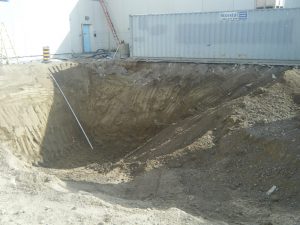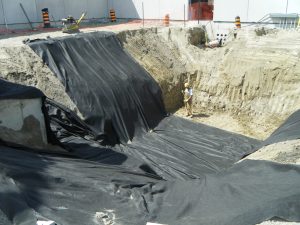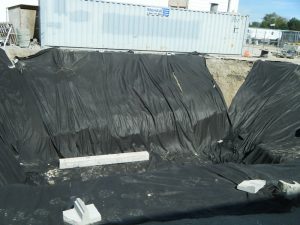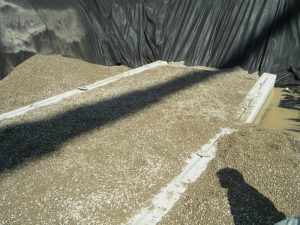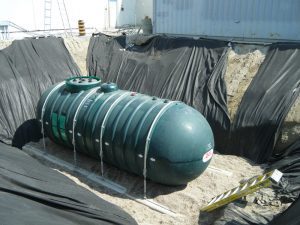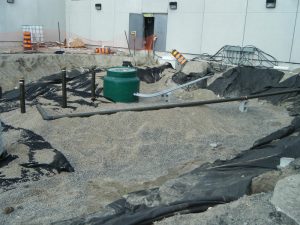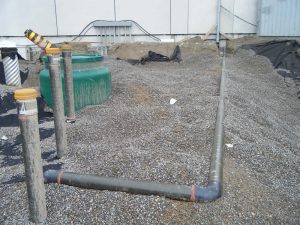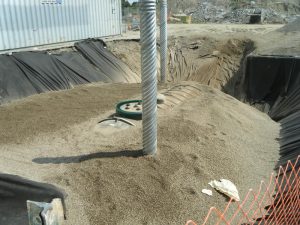Waterline specializes in the removal and replacement of any size commercial tank
We can remove or upgrade your commercial tank to present code requirements, perform soil remediation services, Phase I-IV Environmental Site Assessments (ESA), ULC Tank Testing, Emergency generator number registration, act as a regulatory liaison and provide all other environmental consulting services.
Commercial Tank Removal Process
- A site survey is performed to note all service locates. Then, a detailed quotation will be provided to the customer. Upon approval, a date is scheduled to remove the tank (weather permitting).
- Prior to Waterline removing any underground storage tank, any decorative work will be carefully removed away from the tank area (ie: pavers, patio stones, decking, etc).
- Any soil that is usable is set aside for reuse.
- Any remaining liquids or sludges are removed from the tank and piping system and is disposed of as per the Ministry of Environment.
- Extreme care is utilized when excavating and removing the underground storage tank so that there is no spillage. Tanks are emptied with a vacuum truck to ensure there is zero liquid or sludge in the tank prior to its removal.
- A Hydrogeologist will be on site to take soil samples, which are forwarded to an independent laboratory for analysis. Typically, results are known within 24-48 hours and a fully detailed, signed report will be provided to the owner. Our professional geoscientist ensures that all relevant soil analysis and reports are completed and submitted in a timely fashion.
- The excavation of the tank is completed with a backhoe or excavator; in situations where it is not possible to use such a method, hand excavation may be required. The tank is then removed to a registered recycler.
- All other equipment used in conjunction with the underground storage system is also removed (pumps, wiring, piping, etc).
- The site is then backfilled and restored to its pre-excavation status.
Phase I-IV Environmental Site Assessment (ESA)
- Phase I: Initial site assessment that will “red flag” environmental issues. Reviews the property use back to Crown land.
- Phase II: Detailed Site Assessment involving site sampling and analysis to investigate the presence of environmental concerns. As of October 2004, both Phase I & II are required on all gas stations and dry cleaners involved in a change of status such as a sale, re-financing or insurance requirements.
- Phase III: Site restoration, if contaminated. Remediation is undertaken to remedy the property to M.O.E. & E. code.
- Phase IV: Record of site condition.
Commercial Oil Tank Removal Project Gallery
Browse through photos of our completed commercial and industrial tank removals!
